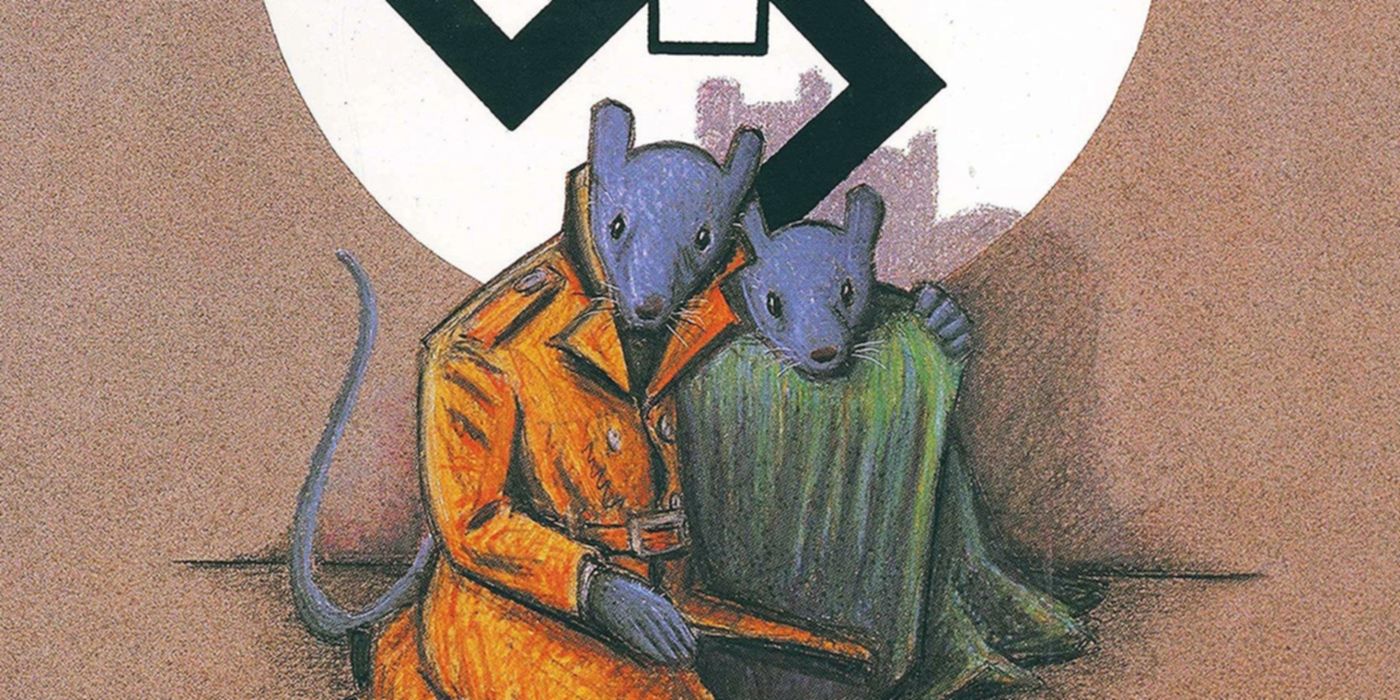
Point of View: First Person (Vladek and Artie) Third Person (Limited to Artie).Though Vladek and Anja are beneficiaries of amazing acts of kindness and humanity, and often do their best to help others in return, Maus shows clearly how danger and privation breed selfishness and callousness. However, the story also explores the many ways in which Jewish people - and others were who suffered alongside them in concentration camps and in war-torn Poland - harm and undermine one another in moments of desperation. Antagonist: German soldiers and hostile Polish civilians are obvious antagonists for the Jews who are struggling to survive amidst persecution.Climax: After years of moving between ghettos and hiding places, Vladek and Anja are sent to Auschwitz-Birkenau.Setting: Poland and Germany (1930s and 40s) Rego Park, Queens (1970s and 80s) Catskill Mountains (1979) New York City (1987).The second volume (“And Here My Troubles Began”) was published in 1991. The first volume was published in book form in 1986. When Published: The first volume of Maus (“My Father Bleeds History”) was serialized in Raw magazine, beginning in 1980 and ending in 1991, when the magazine ceased publication.Nazi propaganda painted Jews as subhuman-more like animals than people - and blamed them for all of Germany’s many problems. More than anyone, though, Hitler and the Nazi Party targeted Jews. People they considered undesirable included ethnic, sexual, and religious minorities people with disabilities political dissidents people who had committed crimes and many others.

The Nazis’ “hopeful” vision centered around the eradication of “undesirable” individuals. The nation was experiencing a social crisis as well as an economic one, and the Nazis made many people hopeful with their vision of a renewed, strengthened Germany. Hitler and the Nazi Party had gained significant public support in a very small amount of time. A few months later, the Nazi Party’s leader, Adolf Hitler was appointed Chancellor of Germany, the highest position of leadership in the German government. In 1932, in the middle of a devastating economic depression, the people of Germany elected several members of the National Socialist German Worker’s Party - known as the Nazi Party - to positions of power in the German parliament. He lives in New York, where continues to publish comics and other art. Spiegelman and Mouly have two children together, Nadja and Dashiell. Spiegelman published his reflections on those attacks in his 2004 book, In the Shadow of No Towers. His tenure lasted from 1992 until 2001, during which time he drew the iconic image that appeared on the magazine cover immediately after the Septemattacks on New York’s World Trade Center. Spiegelman spent ten years as a staff artist for The New Yorker magazine, where Mouly worked - and continues to work - as an art editor. Both volumes met with critical and commercial success. The comics were published in novel form in 1986, and a second volume, which continued Vladek and Anja’s story through Auschwitz and Dachau, was published in 1992. Over the next several years, until the magazine ceased publication in 1991, he continued to publish segments of Maus in each issue. He published the first of the comics that would eventually become Maus in the second issue of Raw, in December 1980. By this time, Spiegelman had begun to interview his father, Wladyslaw, about his experiences in the wartime Poland and Germany, and to draw comics based on their conversations.

He published work in several underground magazines, and edited an anthology of small-press comics called Arcade. In 1971, Spiegelman moved from New York to San Francisco, and began to establish himself as a comics artist. Spiegelman studied art and philosophy at Harpur College (now known as the State University of New York at Binghamton), but did not graduate because he experienced a mental health crisis that forced him to withdraw from school. They settled in the Rego Park neighborhood of Queens, in New York City. The Spiegelman family immigrated to the United States in 1951.

His parents, Wladyslaw and Andzia Spiegelman (whose names he transliterated as Vladek and Anja in Maus, to make their correct pronunciation more obvious to his readers) were Polish Jews and Holocaust survivors who had been sent to Sweden as refugees following the end of the Second World War. Spiegelman was born in Stockholm, Sweden.


 0 kommentar(er)
0 kommentar(er)
